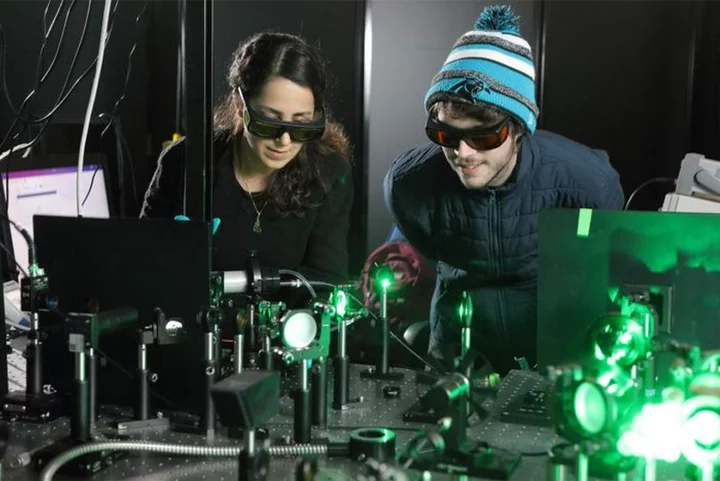Researchers funded by the US Air Force are developing a new type of device that can invite comparisons to a weapon used by a Batman villain.
Scientists, including Patrick Hopkins from the University of Virginia in the US, are working on a new device to be used for on-demand surface cooling for electronics inside spacecraft and high-altitude jets.
The device may seem similar to the freeze gun used by Batman villain Mr Freeze to “ice” his enemies.
“A lot of electronics on board heat up, but they have no way to cool down,” said Dr Hopkins, whose lab has been granted $750,000 over three years to develop the technology.
On Earth, electronics in military craft can rely on nature to cool themselves, but in space, this may be a challenge, scientists said.
Citing an example, researchers said the Navy uses ocean water in its liquid cooling systems while flying jets can rely on air that is dense enough to help keep components chilled.
“With the Air Force and Space Force, you’re in space, which is a vacuum, or you’re in the upper atmosphere, where there’s very little air that can cool,” Dr Hopkins said.
“So what happens is your electronics keep getting hotter and hotter and hotter. And you can’t bring a payload of coolant onboard because that’s going to increase the weight, and you lose efficiency,” he explained.
In such extra-terrestrial environments, a jet of plasma, the fourth and most common state of matter in the universe, can be used in the interior of a craft.
“This plasma jet is like a laser beam; it’s like a lightning bolt. It can be extremely localized,” Dr Hopkins explained.
One of the strange qualities of plasma is that while it can reach temperatures as hot as the surface of the Sun, it chills before heating when it strikes a surface.
In the new research, published recently in the journal ACS Nano, scientists fired a purple jet of plasma generated from helium through a hollow needle encased in ceramic, targeting a gold-plated surface.
When researchers turned on the plasma, they could measure temperature immediately at the point where the plasma hit, and could see that the surface cooled first and then heated up.
“We were just puzzled at some level about why this was happening, because it kept happening over and over,” Dr Hopkins said.
“And there was no information for us to pull from because no prior literature has been able to measure the temperature change with the precision that we have. No one’s been able to do it so quickly,” he said.
The strange surface-cooling phenomenon, according to scientists, was the result of blasting an ultra-thin, hard-to-see surface layer, composed of carbon and water molecules.
Researchers compare this to a similar process that happens when cool water evaporates off of our skin after a swim.
“Evaporation of water molecules on the body requires energy; it takes energy from body, and that’s why you feel cold. In this case, the plasma rips off the absorbed species, energy is released, and that’s what cools,” the researchers explained.
Using the method, scientists could reduce the temperature of the setup by several degrees for a few microseconds.
While this may not be dramatic, they said it is enough to make a difference in some electronic devices.
Now, thanks to the Air Force grant, researchers are looking at how variations on their original design might improve the apparatus.
“Since the plasma is composed of a variety of different particles, changing the type of gas used will allow us to see how each one of these particles impact material properties,” researchers said.
Read MoreScientists discover 3,000-year-old arrowhead made of ‘alien’ iron
Carcinogens found at nuclear missile sites as reports of hundreds of cancers surface
India’s moon rover confirms sulphur and detects several other elements near the lunar south pole
China’s ‘government-approved’ AI chatbot says Taiwan invasion likely
Russian cyber-attacks ‘relentless’ as threat of WW3 grows, expert warns
How new bike technology could help cyclists tell drivers not to crash into them









